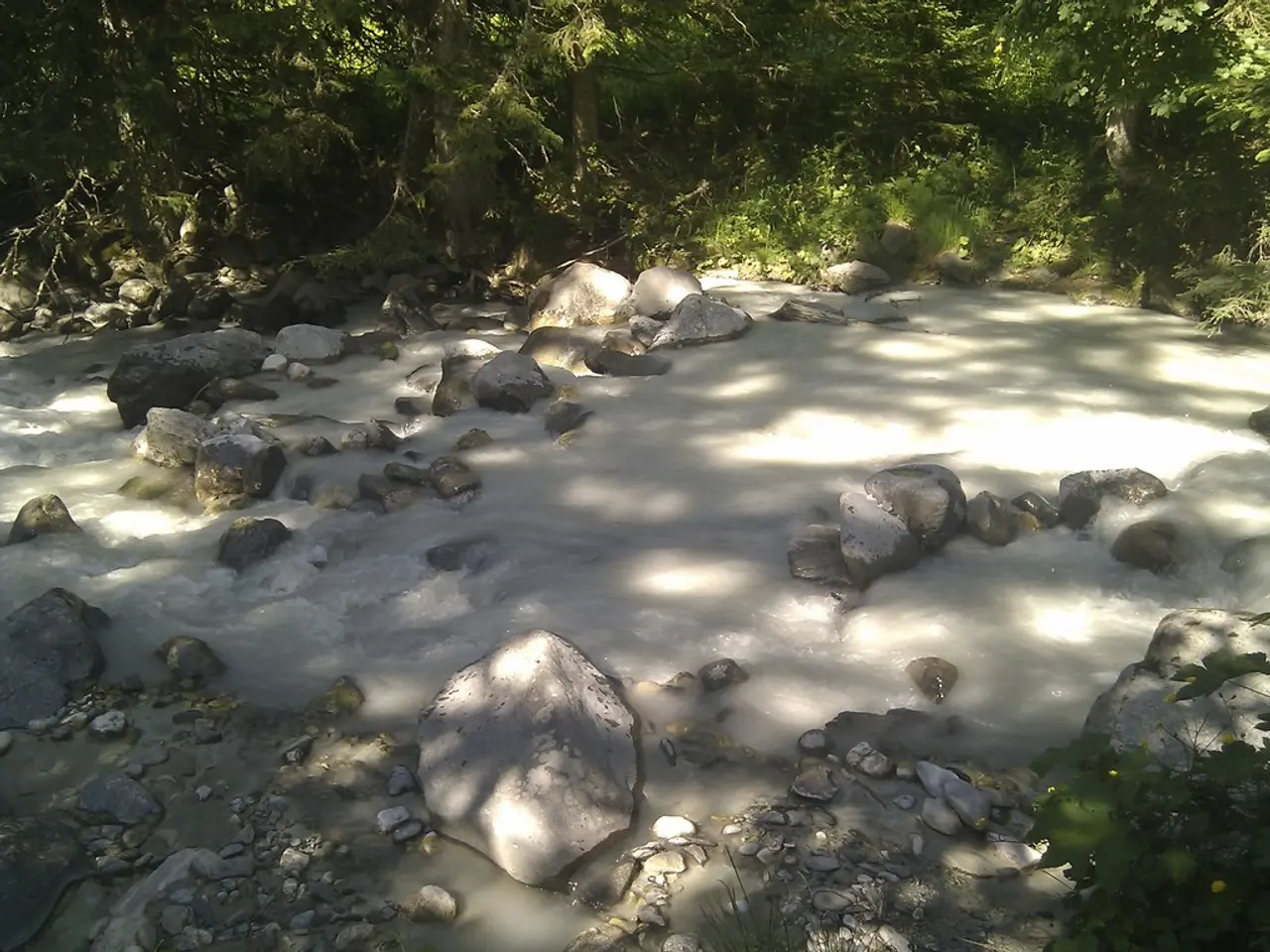Moon water production could potentially become simpler
A groundbreaking new technology, developed by scientists, promises to revolutionise the extraction of water from Moon soil, potentially reducing the need for shipping water from Earth for lunar missions. This innovative photothermal method combines water extraction and chemical conversion processes into a single step, offering significant energy efficiency improvements and cost savings.
The technology harnesses concentrated sunlight, converted into heat, to extract water from the Moon's regolith and drive photothermal catalysis of CO₂—exhaled by astronauts—into carbon monoxide and hydrogen gas. These gases can be further processed into oxygen for breathing and rocket fuels, such as hydrogen-based chemicals.
One of the key advantages of this one-step integration is its enhanced energy utilisation efficiency and reduced cost and infrastructural complexity compared to prior multi-step, energy-intensive methods. Furthermore, the photothermal process relies on natural sunlight, making it advantageous for sustainability and cost reduction on the lunar surface.
Tests conducted using lunar soil samples from China's Chang'E-5 mission have confirmed that lunar soil can serve as a source of water and feedstock for producing essential resources on-site. If successfully scaled, this technology could support long-term human missions to the Moon and beyond, providing a crucial step towards making lunar living more feasible.
However, several challenges remain for scaling up the technology and ensuring its long-term use. The harsh lunar environment, characterised by extreme temperature fluctuations, intense radiation, and low gravity, complicates reliable operation and material durability. Additionally, the variability in lunar soil properties affects consistent water extraction and resource production performance.
Another challenge is the dependence on astronauts' exhaled CO₂, which may be insufficient alone to sustain continuous production of water, fuel, and oxygen. Furthermore, current photothermal catalysts, while promising, still fall short of the levels required for fully supporting human life beyond Earth.
High costs for developing, deploying, and maintaining the technology and necessary systems on the Moon remain significant barriers. Nevertheless, Prof Lu Wang, one of the study's authors, expressed excitement about the success of the integrated approach, enhancing energy utilisation efficiency and decreasing infrastructure development costs.
Growing international interest exists in establishing a long-term human presence on the Moon and using it as a launchpad for deeper space missions. This advance in the integrated method for water extraction and chemical conversion offers a more efficient path for producing vital resources compared to previous methods, potentially paving the way for a sustainable future in lunar exploration.
- This new technology, developed by scientists, will revolutionize the way scientists extract water from Moon soil and convert CO₂ exhaled by astronauts into usable gases for lunar missions.
- The photothermal method, which combines water extraction and chemical conversion processes, promises significant energy efficiency improvements and cost savings for lunar missions.
- The one-step integration of this technology offers enhanced energy utilization efficiency, reducing costs and infrastructural complexity compared to prior multi-step methods.
- The technology relies on natural sunlight, making it advantageous for sustainability and cost reduction efforts on the lunar surface.
- Successfully scaling this technology could support long-term human missions to the Moon and beyond, potentially providing a crucial step towards making lunar living more feasible, and paving the way for a sustainable future in lunar exploration.




